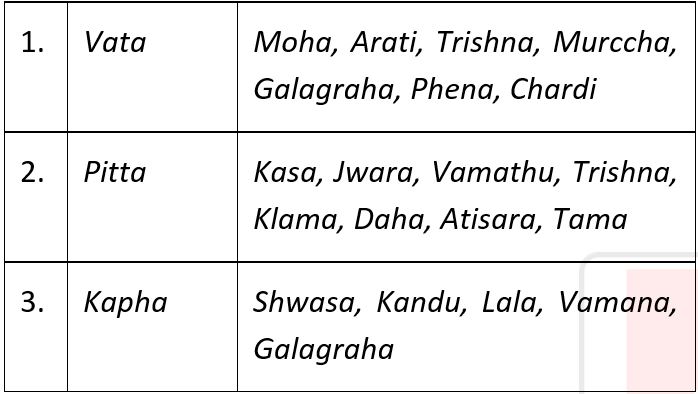The Dark Side of Beauty: An Analysis of the Toxic Risks in Cosmetics w.s.r. to Dushi Visha
DOI:
https://doi.org/10.21760/jaims.10.4.34Keywords:
Skin, Beauty, Cosmetics, Dushi Visha, Heavy metals, Cumulative toxicityAbstract
Cosmetics have been used by humans for thousands of years, not only to enhance beauty but also to protect the skin from environmental damage. This shows that caring for the skin has always been an essential part of human life. In recent times, however, the popularity of cosmetic products has grown rapidly. As a result, manufacturers are producing cosmetics in large quantities to meet this rising demand. But this fast-paced production often lacks sufficient attention to safety standards, regulations and quality control. Today, many people use a variety of cosmetic products every day, such as skincare creams, lotions, cleansers, lipsticks, nail polishes, deodorants and more. These products contain harmful ingredients such as Hydroquinone, Parabens, Phthalates and heavy metals like Lead and Arsenic. Prolonged use of these products leads to their accumulation in the body, potentially causing issues like skin irritation, heightened vulnerability to infections, kidney and liver damage, reproductive toxicity and even carcinogenic effects. The skin is an important part of how a person looks. Throughout history and even today, people have cared a lot about outer beauty. Ayurveda is highly valued in beauty care because it offers natural, affordable and effective treatments. In Ayurveda, the concept of "Dushi Visha" (impotent or weak poison) aligns with the toxicity of cosmetics. According to Acharya Sushruta, this type of poison remains in the body for a long time, having been partially neutralized by anti-poisonous treatment. It is described as weak in potency, not causing immediate harm but staying within the body for years, covered by the Kapha Dosha. This article explores the connection between cosmetic chemical toxicity and the Ayurvedic concept of Dushi Visha, offering insight into the health effects of cosmetics and possible solutions from the perspective of ancient toxicology.
Downloads
References
Gandhi A, et al. Cosmetology in Ayurveda. J Ayurvedic Sci Yoga Nat. 2022;9(2):7-17.
Statista. Beauty industry in India [Internet]. Available from: https://www.statista.com/topics/5039/beauty-industry-in-india/#topicOverview
Lein PJ. Intoxicating beauty: toxic chemicals in cosmetics. University of California.
Mali VG. A conceptual study on cosmetic toxicity w.s.r. to Dushi Visha. CSMSS Ayurved Mahavidhyalaya, Aurangabad, Maharashtra, India.
Mahto MK, et al. Role of Ayurvedic management in chemical toxicity of cosmetics: a review. Int J Res Ayurveda Pharm. p. 9-13.
Alnuqaydan S, Sanderson J. Toxicity and genotoxicity of beauty products on human skin cells in vitro.
Mahto MK, et al. Role of Ayurvedic management in chemical toxicity of cosmetics: a review.
Pereira JX, Pereira TC. Cosmetics and their health risks.
Ashish BG, Sharon P, Garima S. Dushi Visha and oxidative stress—correlation. Int J Ayu Alt Med. 2015.
Textbook of Agadatantra. Pune: Rashtriya Shikshan Mandal Publication; 2008. 1st ed.
Sharma A. Sushruta Samhita. Kalpasthan 2/25-33. Varanasi: Chaukhamba Surbharati Prakashan; 2001. p. 522-4.
Shastri A. Sushruta Samhita of Maharsi Sushruta. Vol.1. Kalpasthan 2/30. Varanasi: Chaukhamba Sanskrit Sansthan; 2019. p. 33.
Sukla V, Tripathi RD. Charaka Samhita. Vol.2. Chikitsasthan 23/31. Delhi: Chaukhamba Sanskrit Pratishthan; 2012. p. 545.
Shastri A. Sushruta Samhita of Maharsi Sushruta. Vol.1. Kalpasthan 2/30-32. Varanasi: Chaukhamba Sanskrit Sansthan; 2019. p. 33.
Gupta A. Atangasamgraha. Uttarsthana 40/37. Varanasi: Chaukhamba Krishnadas Academy; 2019. p. 341.
Tripathi B. Astang Hrdaya. Uttarsthanam 35/34-36. Varanasi: Chaukhamba Sanskrit Pratishthan; 2019. p. 1147.
Mishra BS. Bhava Prakasa. Madhyam Khanda, Vol 2. Uttarardha. 7th ed. Varanasi: Chaukhamba Sanskrit Sansthan; p. 744.
Sastri L. Yogaratnakara. Vishanidanam. Varanasi: Chaukhamba Prakashan; 2008. p. 465.
Shukla V, Tripathi R. Charaka Samhita of Acharya Charaka. Vol. 2. Chikitsasthan 23/28-30. Delhi: Chaukhamba Sanskrit Pratishthan; 2012. p. 544-5.
Momin NM, Disouza JI, Tatke PA, Gonsalves M, Marker A. Marker-based standardization of novel herbal dental gel. Res J Top Cosmet Sci. 2011.
Kapoor VP. Herbal cosmetics for skin and hair care. Nat Prod Radiance. 2007 Jul-Aug;4:307-14.
Sharma K, Joshi N, Goyal C. Critical review of Ayurvedic Varṇya herbs and their tyrosinase inhibition effect. Anc Sci Life. 2015 Jul-Sep;35(1):18-25. doi: 10.4103/0257-7941.165627. PMID: 26600663; PMCID: PMC4623628.















